Can a 32-core CPU be considered modest these days? If so, the AMD EPYC 7452 may be considered a modest processor. The list price is just over $2000 USD and it has a TDP of only 155W. 155W would have been a high-end chip only a few generations ago, but these days it could almost be considered a power-sipping part. This relatively low-cost part has more cores and cache than the highest-end Xeon currently on the market. AMD also has PCIe Gen4 and 8x DDR4-3200 lanes that, if you read our piece on The 2021 Intel Ice Pickle, Intel will not match until the end of 2020 with realistic volume shipments in Q1 2021. If you need cores and a strong platform and are willing to trade sustained performance for lower power consumption, then this may be the part for you.
AMD EPYC 7452 Overview
Key stats for the AMD EPYC 7452: 32 cores / 64 threads with a 2.35GHz base clock and 3.35GHz turbo boost. There is 128MB of onboard L3 cache. The CPU features a 155W TDP. These are $2025 list price parts.
Here is the lscpu output for the AMD EPYC 7452:
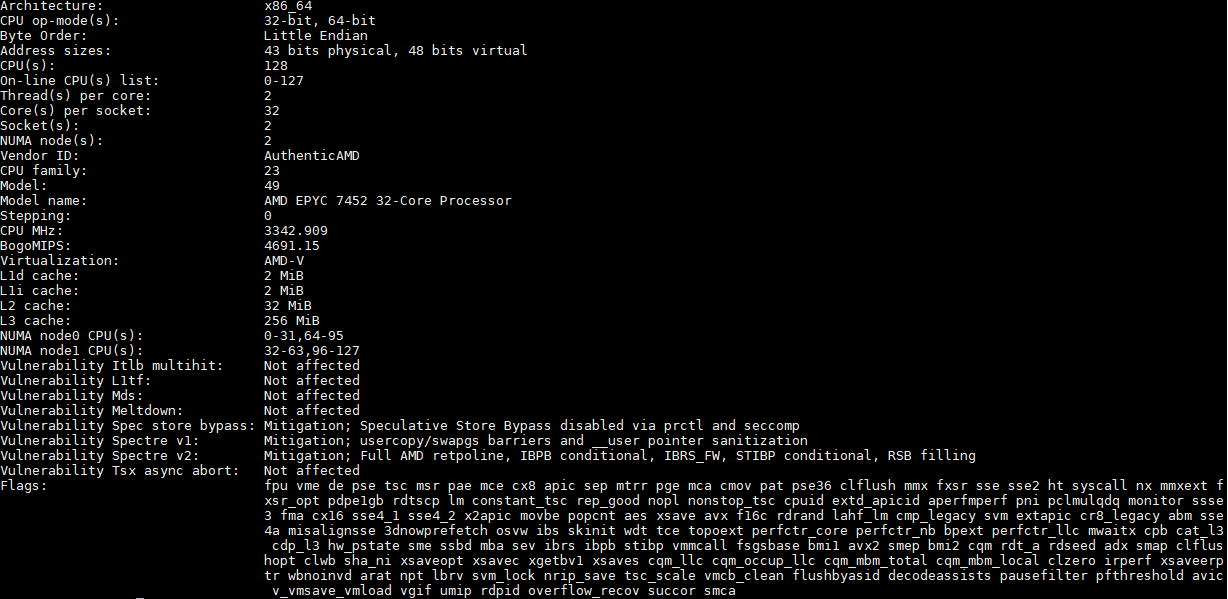
At 32 cores, these processors can take the place of dual 16-core processors consolidating into a single socket. That means we effectively get a 2:1 consolidation ratio over lower-end Xeon configurations. What is more, the pricing is low enough to compete on a per-core basis with the Xeon Silver range.
What is different about this part is pricing. This is a lower-clocked 32-core part but AMD also offers the chips at only around $63.30/ core. Here are the AMD EPYC 7002 “Rome” SKUs on a $(USD) list price/ core basis:
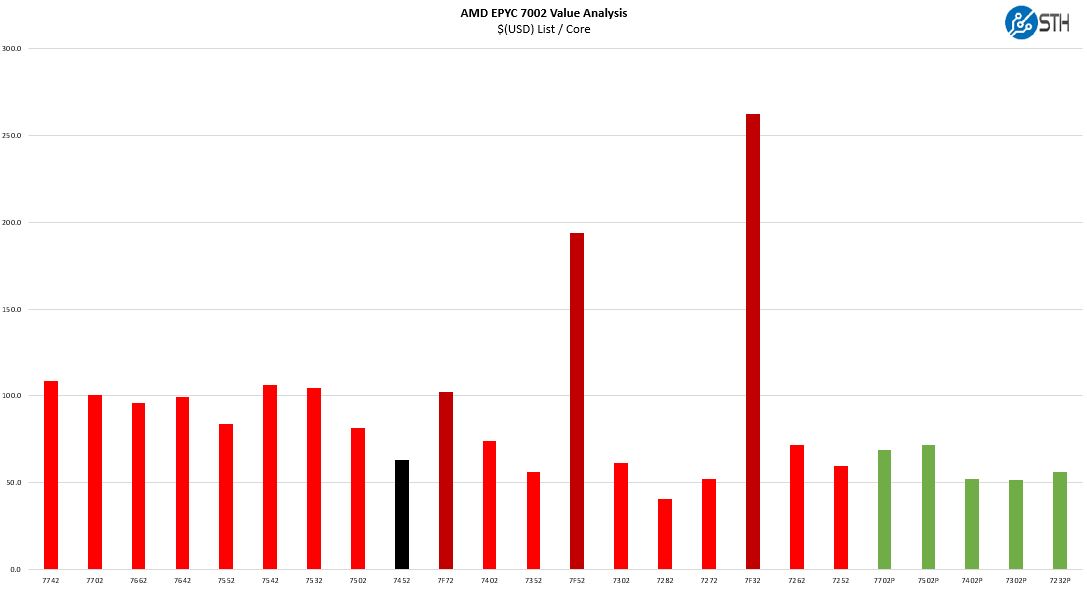
In the AMD EPYC range, this is competitive with the AMD EPYC 7502P on a cost per-core basis but can scale to 2-socket servers. Beyond the simple consolidation example, we get PCIe Gen4 bandwidth, plenty of PCIe lanes, memory capacity, and memory bandwidth capacity well beyond what Intel Xeon is offering.
The question is, how does the lower 155W TDP impact our benchmarks.
In our benchmarks, we are going to investigate the performance impact. First, we are going to take a look at the test configurations then get into details.
AMD EPYC 7452 Test Configurations
For our testing, we utilized both single and dual-socket configurations to show different aspects of performance, check the 1P story, and gain access to both of our comparison sets.
Test Configuration: Single Socket
For most of our charts, we are using the Tyan Transport SX TS65A-B8036.
- Platform: Tyan Transport SX TS65A-B8036
- CPU: AMD EPYC 7452
- RAM: 8x 32GB Micron DDR4-3200 RDIMMs
- OS SSD: 400GB Intel DC S3700
- Data SSD: 960GB Intel Optane 905P
You are going to see more about this platform, but this is a PCIe Gen4 single-socket platform from Tyan that has 16x front U.2 NVMe bays, 10x front SATA/ SAS bays, two rear 2.5″ SATA OS SSD bays, six expansion slots on risers and an OCP mezzanine slot. All this is achieved using a single AMD EPYC 7002 series CPU.
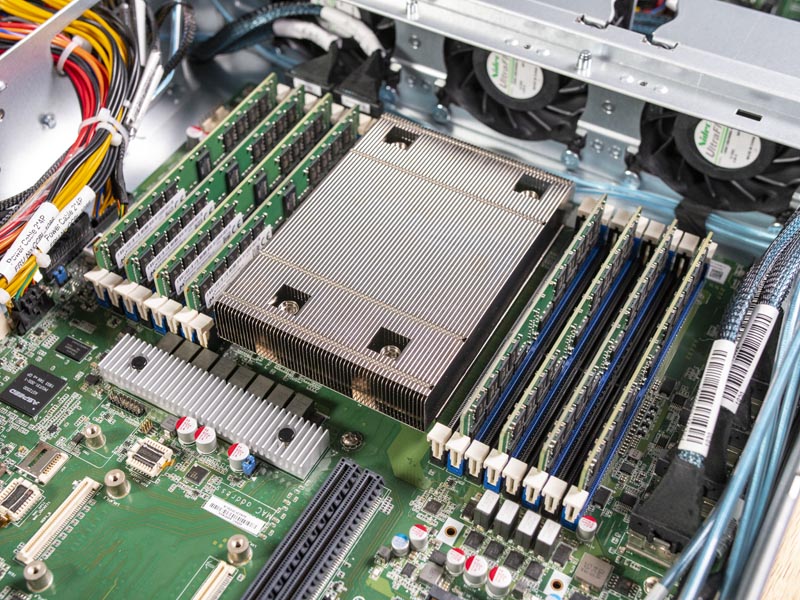
Some servers are not going to be designed to accept such high-power CPUs so one needs to watch out for those when shopping for servers. On the single-socket side, it is less of a concern. In form factors such as 2U 4-node, it will be a bigger concern.
Test Configuration: Dual Socket
We also had a test configuration for dual-socket processors. We have been using the AMD “Daytona” reference platform and we had the latest AGESA for this as well.
- Platform: AMD “Daytona” Reference Platform
- CPUs: 2x AMD EPYC 7452
- RAM: 16x 32GB Micron DDR4-3200 RDIMMs
- OS SSD: 400GB Intel DC S3700
- Data SSD: 960GB Intel Optane 905P
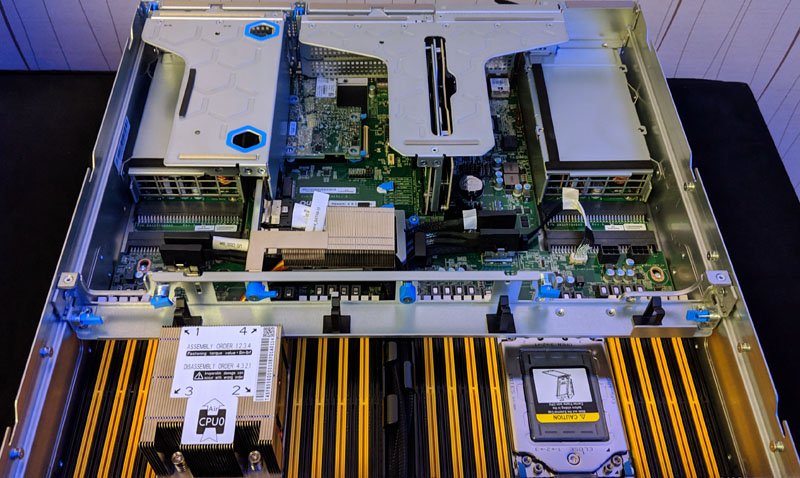
Note, this platform looks a lot like the Quanta AMD EPYC Rome Servers Set to Make a Splash that we covered on a Q4 2019 visit to Taipei, Taiwan.
Next, let us get to performance before moving on to our market analysis section.

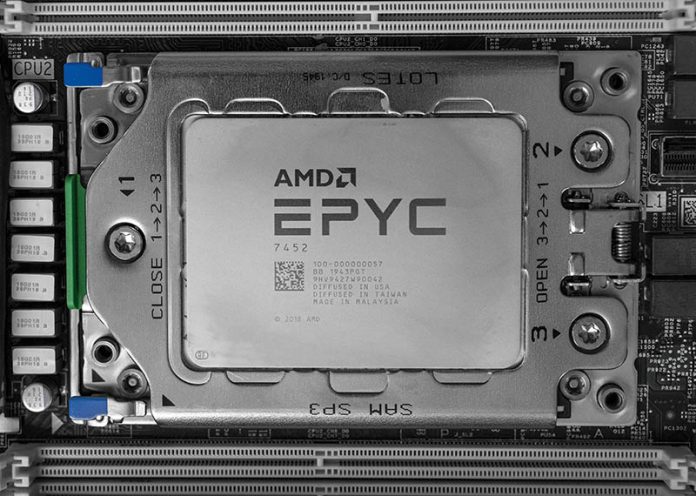



Seeing the performance of this chip and the other EYPC chips next to the Intel Xeon offerings got me thinking:
“Oh how the once mighty have fallen…”